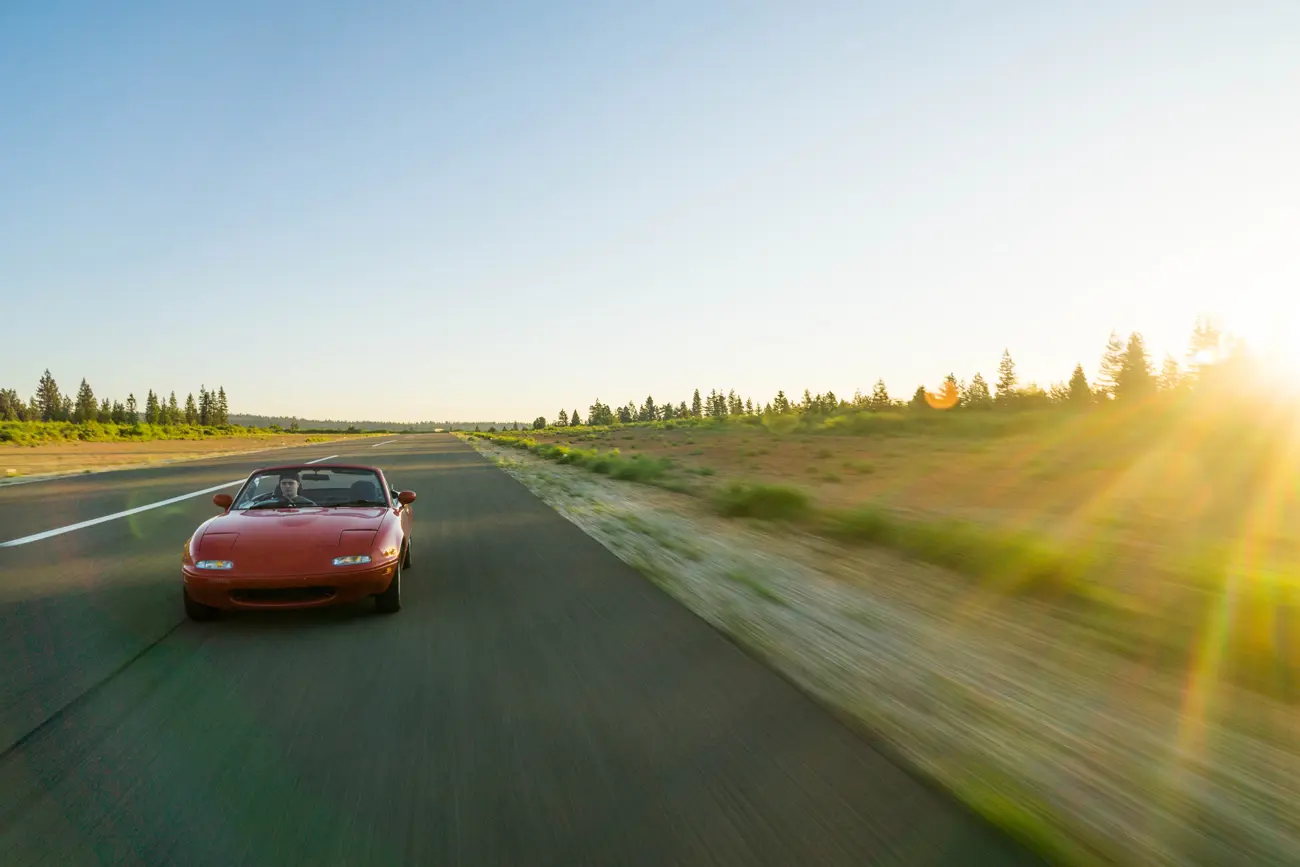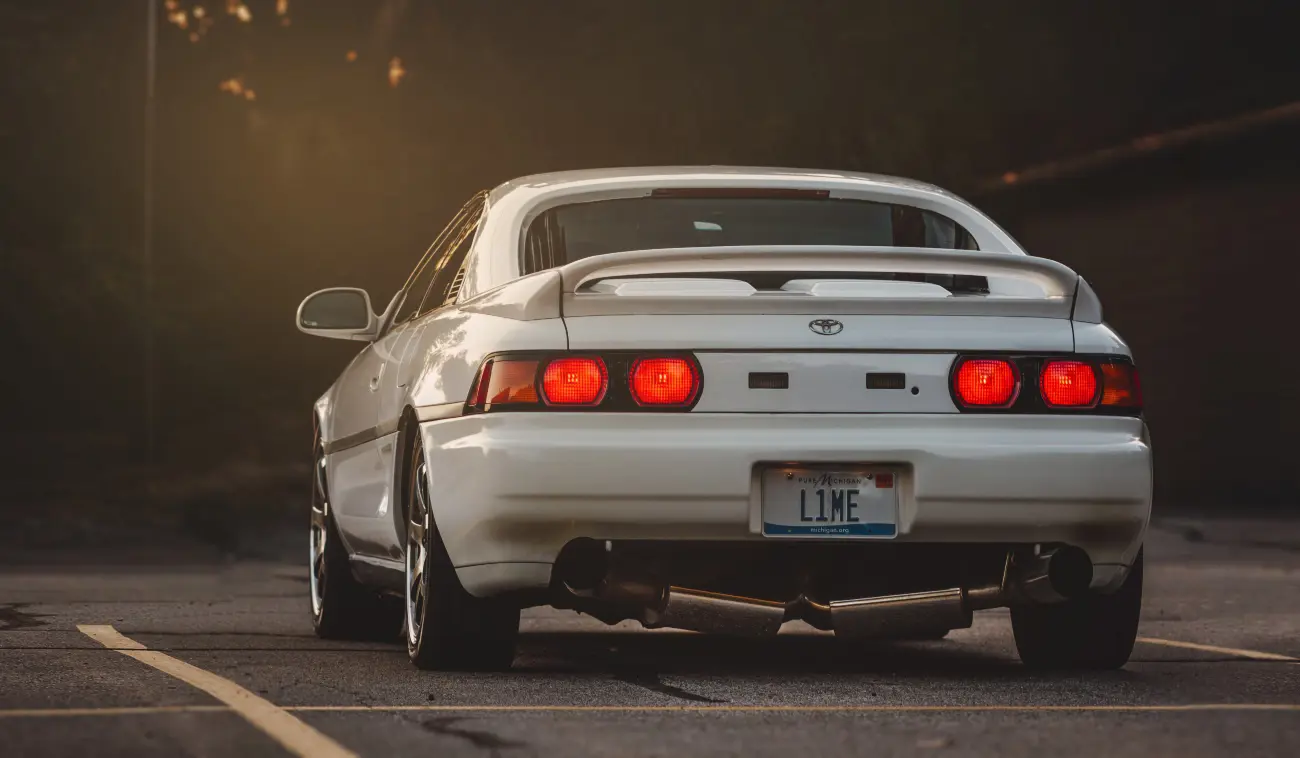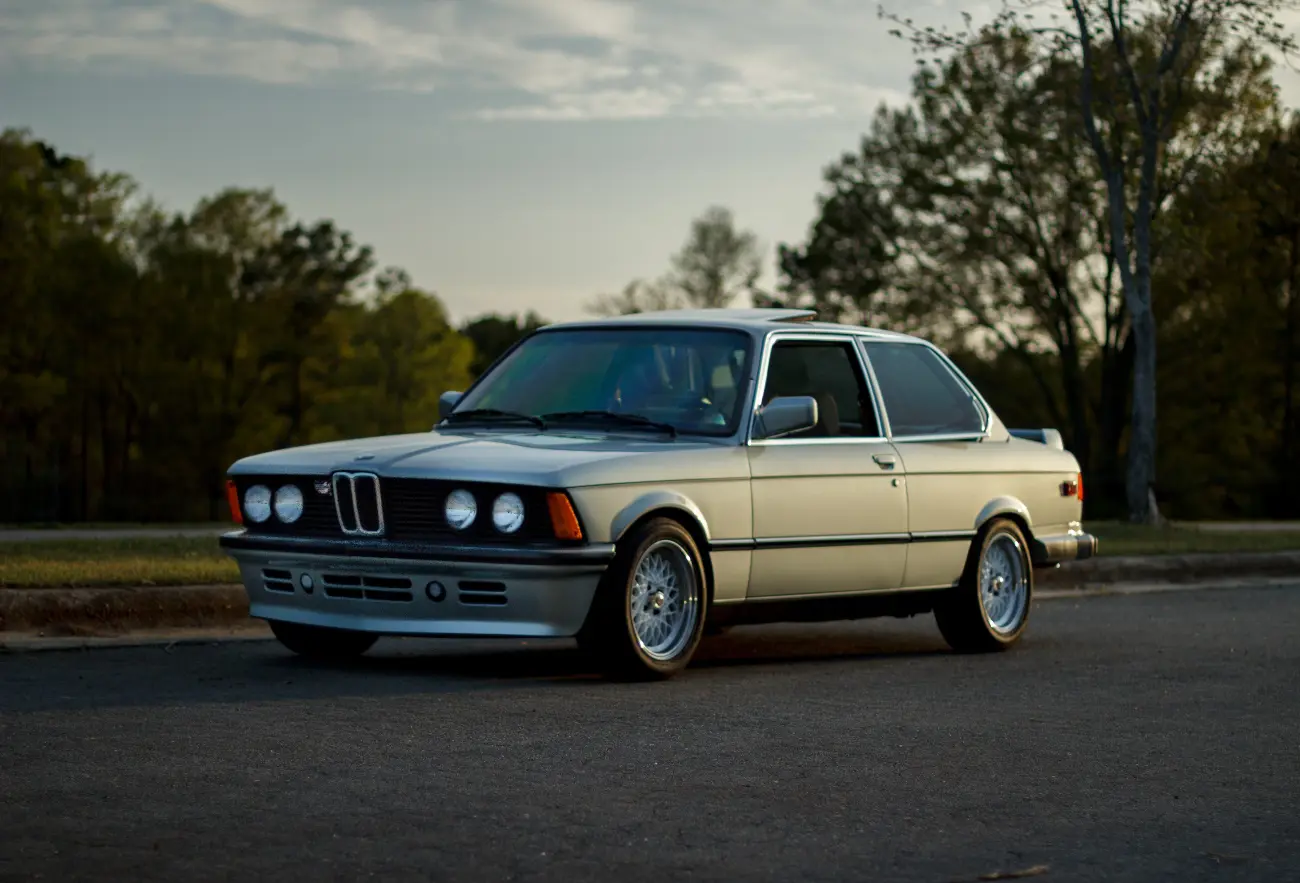What's a limited-slip differential?
26 October 2021
You may or may not be familiar with the phrase 'limited-slip differential' (or limited-slip diff, or more simply LSD). If you've spent much time around either 4x4s or sports cars, however, the chances are that you may be familiar with the concept. Perhaps your own classic is even blessed with this particular bit of kit?
But what exactly is the limited-slip diff – and what does it do? How does it affect the way a car drives, and which vehicles have featured it? A clever piece of technology, it has nonetheless been around in some form or other for decades – many of the earlier cars to boast the technology will now be prime candidates for classic car insurance.
Strap in and get ready for some hairpin bends, as we tell the story of the limited-slip diff.

Improved grip and performance
Part of a car’s drive system, the limited-slip differential or LSD is designed to help the engine transmit its power to the road more efficiently, resulting in better handling and performance.
To understand its function properly, we first need to compare the LSD with a normal (or 'open') differential, which is present in most road cars.
An open differential allows each of the driving wheels to turn at different speeds so that, for example, you can turn a corner or bend safely. In this case, the wheel on the outer edge of the corner or bend has further to travel than its companion on the inner edge – and therefore needs to spin more quickly. The 'open diff' uses gears to allow this to happen.
So far so good. The drawback here is that, if the car goes over an unstable surface – snow, gravel, or oil for example – and one wheel loses traction, causing it to spin faster, the open differential will send most of its power to the wheel with the least traction, meaning that that wheel spins quickly but uselessly as it has no grip on the road. Meanwhile, the adjacent wheel (the one with good traction) gets less power sent to it. Result: the car struggles to get moving.
Why does this happen? Well, when large amounts of power are being sent down to the wheels, the open diff can get overworked, and will simply look for the easiest path down which to send that power – which is, in this case, the tyre with the least traction.
Too much work on the accelerator, and a powerful engine, can then result in all that power being lost in a cloud of smoke, as the non-gripping tyre spins away madly without being able to engage with the road and make progress. Meanwhile the other tyre continues to grip but without enough power to shift the vehicle's weight.
What the LSD adds to the equation is the ability to redistribute the engine's torque to whichever wheels are gripping the road most firmly. Result: less wheelspin on the non-contact tyre, more power, grip and acceleration on the tyre doing the work.
LSDs achieve their results by limiting the amount of independence between those two wheels, so that only a certain amount of power is wasted on the wheel with the least traction, while its companion with better grip receives enough continuous power to help get the car moving again.
Limited-slip diffs achieve these results by either a mechanical system (as seen in those classic cars that have the feature), an electronic setup in more recent vehicles, or a mixture of both. Typically, clutches or additional gears are added to the usual differential format so that, when one wheel starts to slip, the clutches engage and cut off (or limit) how much power is sent down to that wheel.
How does LSD benefit a car?
The biggest way in which an LSD will benefit a car is better handling. It can also enhance safety, however, because it provides more control over which wheels are receiving the engine power.
For this reason, sports and performance cars are often fitted with a limited-slip differential, as it helps to control some of the large amounts of power that the engine is placing down on the road through the wheels.
Without the work of the LSD, drivers would find it harder to keep these very powerful cars under control. Elsewhere, four-wheel-drive cars benefit from the device, as it provides extra grip during any off-road adventures that these 4x4s are taken on.
Traditionally, diffs that rely on mechanical systems have been expensive, both to produce and to fit. They tend to be seen only on performance cars, and 'hot hatch' versions of cars like the VW Golf or Renault Megane.
More recently, however, cars have become a lot more sophisticated, and some modern cars now come equipped with 'e-diffs' – electronic differentials that use clever wheel speed sensors to determine which wheels are moving fastest, and then tell the car's computer to apply the brakes to those wheels that are losing traction.

The limited-slip diff: a short history
Question: what do a car's suspension, disc brakes and limited-slip differential all have in common? Answer: Like many other features that make driving the safe, enjoyable activity it is today, these three innovations all came into production cars from the world of motor racing.
It was back in the 1930s that Ferdinand Porsche, Czech-German engineer and founder of the iconic sports car brand that bears his name, asked a German engineering firm to create a differential to reduce wheelspin in Grand Prix cars. Porsche saw the need for this technology as their GP cars were often losing stability on track, with the huge power coming from their engines often being more than their narrow tyres could handle.
The limited-slip diff later enjoyed a surge in popularity in the 1960s, when muscle cars came into fashion in America. US car manufacturers American Motors, Chrysler (through its marques Dodge and Plymouth), Ford, and General Motors (Buick, Chevrolet, Oldsmobile and Pontiac) jostled to produce the most powerful, best-driving, road-safe performance cars – and the limited-slip diff became a key weapon in the fight.
When your V8 muscle car was working at high revs, the LSD was a hugely useful stability aid, allowing you to roar away at speed – yet remain firmly planted on the road.
As the LSD has evolved, and taken on electronic systems, different forms of differential have emerged, each performing a slightly different function and best suited to a certain type of vehicle or driving style.
For example, on front-wheel-drive hot hatchbacks, where the front wheels are having to balance both steering the car and putting its power down on the road, a limited-slip diff helps to minimise torque steer (where the engine's torque or pulling power influences the steering, during rapid acceleration for example).
A LSD has also meant that front wheels can manage power outputs that cars of 10 or 20 years ago just couldn't manage.
In 4x4 vehicles, meanwhile, the limited-slip diff is enormously useful in sending power to whichever wheel is gripping the ground most successfully.
10 classic cars with limited-slip diff
Toyota MR2
The third generation of Toyota's mid-engined, rear-wheel drive two-seater, from 2003 onwards, featured the technology as an option. Just as well as, being lightweight yet potent, the MR2 was – and is – a car that drivers liked to have some fun with.
Mazda MX-5
Like the MR2, Mazda's two-seater has always been about driving thrills and spills. Its feather-light weight and superb handling recall some of the iconic British roadsters of the 1960s and 1970s, such as the MGB or Triumph TR6.
Now, especially in its early generations, it's a much-loved classic and one of the most frequent beneficiaries of our classic motor insurance. Confirming its identity as a true drivers' car that you could throw into corners with gusto, many MX-5s have been fitted with LSD technology.
Range Rover Classic
Yes, the original luxury SUV really was intended for off-road work, not just prowling around Kensington and Chelsea. As such, later models featured a limited-slip differential as standard, complementing the four-wheel drive system brilliantly to provide unparalleled levels of traction.
Rover 200 BRM
The BRM was a range-topping sporting edition of Rover's successful 1990s 200 hatchback – a sort of GTI or XR3 version, if you will. (The BRM stands for British Racing Motors, a Formula One team that had its heyday in the 1960s and 70s).
Buyers got red quilted leather seats, red carpet, 16-inch alloys – and a woven mesh grille, a throwback to BRM's 1960s F1 cars. The BRM also got a 145bhp engine, plus a limited-slip differential to control all that power. Just 795 were built for the UK market, with a further 350 heading overseas. Any still out there will doubtless be beneficiaries of some specialist classic car insurance.
Honda Accord Type R
There's something about a big sporting saloon or estate that we just love. And one of the very best at providing this unique mix of comfort and performance was the sporting, Type-R variant of the sixth generation Honda Accord, which was sold here in small numbers (fewer than 2,000 for the UK car market) between 1998 and 2002.
Recaro seats, leather steering wheel, stiffer suspension, dual exhaust, hydraulic power steering and yes, our friend the limited-slip differential were among its key features.
Mazda RX-8
Days of Thunder, Thelma & Louise, Ronin… the 1990s had some great car-chase movies and, on the back of these films, witnessed a renewed interest in performance cars. And the Japanese market wasn't slow to harness this new interest in all things fast and furious, unleashing brilliant, fine-handling cars such as the Mazda RX-8. With financial assistance from new owners Ford, Mazda brought us an excellent rear-wheel drive rotary engine coupé, which featured the desirable limited-slip diff as standard.
BMW M3
The M3 sporting variant of BMW's much-loved 3 Series saloon has been an iconic sports car ever since its first generation of 1986-1991. Wonderful handling, performance-car power, and strong grip have all added to its appeal. Part of its ongoing reputation as a true driver's car must lie in the fact that the limited-slip differential has come as standard on every generation. Stability is dialled in as standard: the driver just adds the fun.

Toyota Supra
Various generations of Toyota's range-topping sports car – including the Mk4, famed for its appearance in another car-chase classic, 2001's The Fast and the Furious – got LSD. The technology gave that little extra bit of traction to a car that famously liked to be driven hard and fast.
Jaguar XJS
You might not immediately think of Jaguar's long, low, stately E-Type successor as a key candidate for the limited-slip technology: but yes, the XJS got LSD as standard. Though a big car it was, lest we forget, designed to be driven fast, with a range of straight-six and V12 engines, and had a distinguished career in motorsport.
Nissan 180SX (1991 facelift onwards)
Japanese cars are putting in a strong showing in this list. That's because the likes of Honda, Toyota, Mazda and Nissan produced some truly excellent sports and performance cars in the 1980s and 1990s, all sporting the very best and latest technology to improve performance, handling and grip.
Browse classic sports car forums and you'll see Nissan's 1980s/90s 180SX cited regularly as a wonderful car to drive: from its 1991 facelift onwards, it got the benefit of a limited-slip differential to keep you planted firmly on the road.
Ford Sierra Cosworth & XR4x4
For their slightly different reasons, two of the specialist iterations of Ford's futuristic-looking 1980s hatchback – the blisteringly quick Cosworth and the tough, four-wheel-drive XR4x4 – both ticked the LSD box. Like BMW, Ford enjoyed a reputation for making cars that were fun to drive, and the Sierra's sporty derivatives continued the good work begun by the likes of the Escort XR3 and Fiesta XR2.
Classic car insurance from Lancaster
Do you need to protect your limited-slip diff classic?
The specialists at Lancaster can find classic car insurance with a number of benefits including discounts for club members and cover for historic rallies or static shows.
Our UK-based call centre and 24-hour claims helpline is here when you need us most.
Get a quote for classic auto insurance today.
